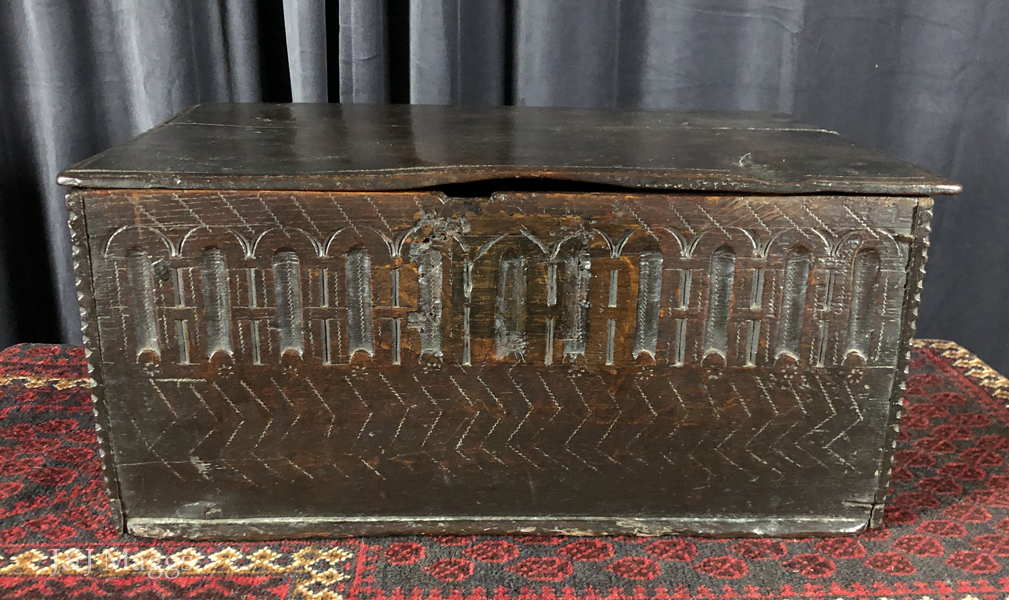
Jan & John Maggs
Antiques and Art
A small oak bible box with interesting carving on its face and sides
~ ~ ~ ~ ~ ~ ~ ~ ~ ~ ~ ~ ~ ~ ~ ~ ~ ~ ~ ~ ~ ~ ~ ~ ~ ~ ~ ~ ~ ~ ~ ~ ~ ~ ~ ~ ~ ~ ~ ~ ~ ~ ~ ~ ~ ~

Purchased locally, this small bible box is decorated with unique carving and marked by an interesting history. The face and sides are decorated with a row of nulling, articulated by narrow, carved grooves. Each groove is embellished by a circle of seven small punches. On the face, these circles are at the bottom of the nulling; on the sides they are, curiously, above. In their place on the face, we find a wriggling line about an inch in length, evidently made by a punch of that length. The maker used this punch to create the wrigglework on the sides – beneath the nulling, whereas on the face, he used it to punch several “sawtooth” lines of three strokes each. The front and rear corners are finished with unusually fine chip carving, more noteworthy in that it was applied to the sides, which enclose the face and back, rather than the opposite construction, which was normal in the period.
The lid, which is edged with a fine thumbnail on all sides, appears to have been reversed, probably because of the unsightly damage to the rear corners – more bothersome when they were at the front. The burn on the top and the “cavity” in the underside of the lid – probably a defect in the board, which the joiner put at the rear – is now visible at the front. The hasp is missing, and the hinges appear to have been replaced at the time the lid was turned. The original hole for the lock box has been repaired and re-carved, though with less skill than the maker’s. The lid has been reinforced by two cleats on its underside.
Despite its interesting history, the box and its hinges are tight and secure today.
English, ca. 1620
Width: 21 ⅛”; Depth: 14”; Height: 9 ½”
Price: $850
Questions? Click HERE.
Inventory #27457
~ ~ ~ ~ ~ ~ ~ ~ ~ ~ ~ ~ ~ ~ ~ ~ ~ ~ ~ ~ ~ ~ ~ ~ ~ ~ ~ ~ ~ ~ ~ ~ ~ ~ ~ ~ ~ ~ ~ ~ ~ ~ ~ ~ ~ ~

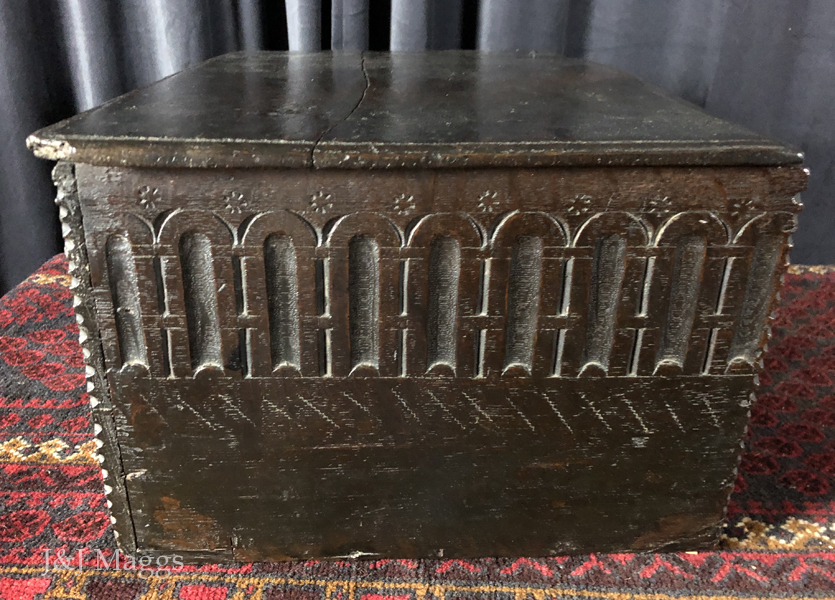
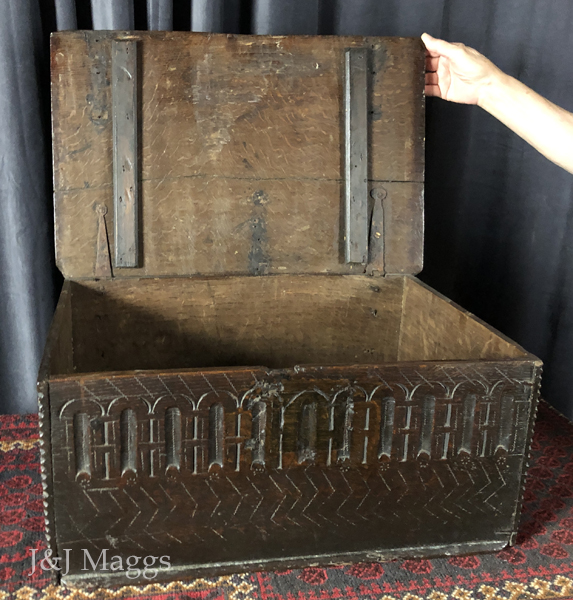
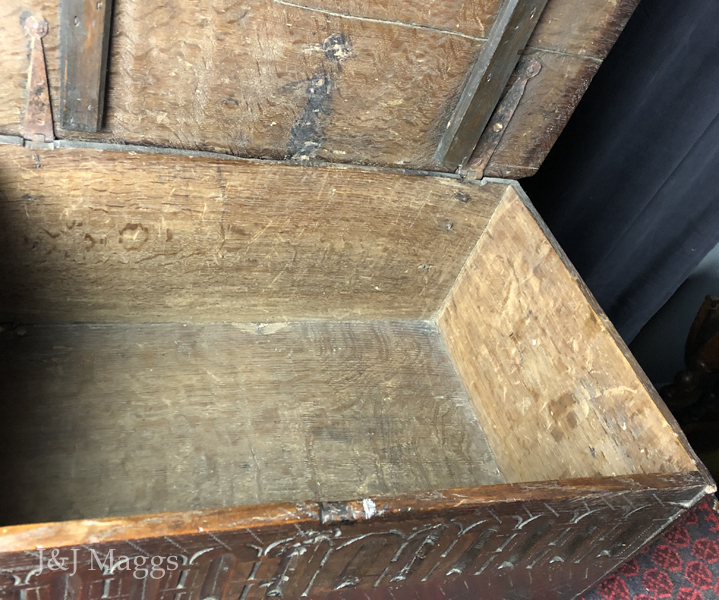
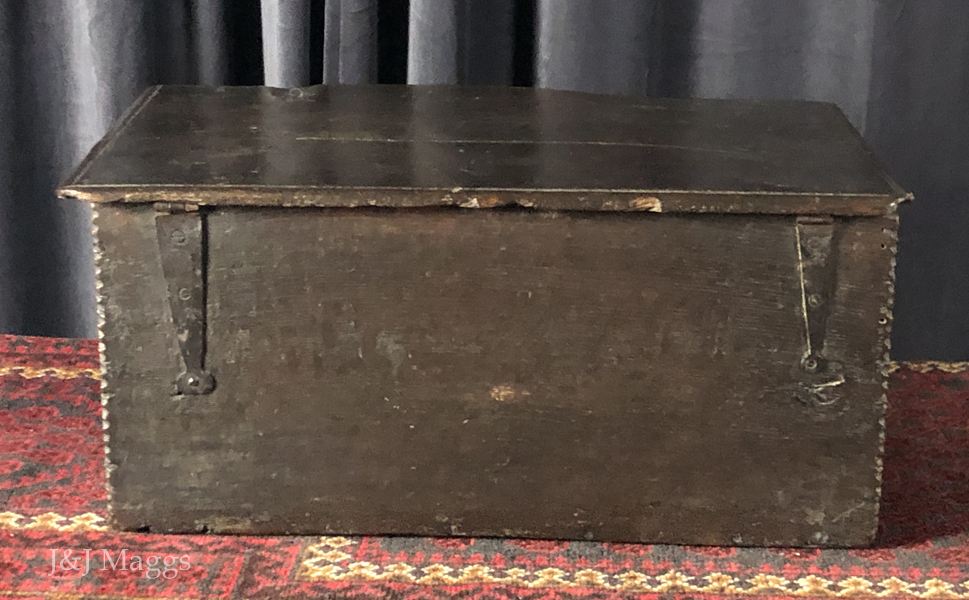
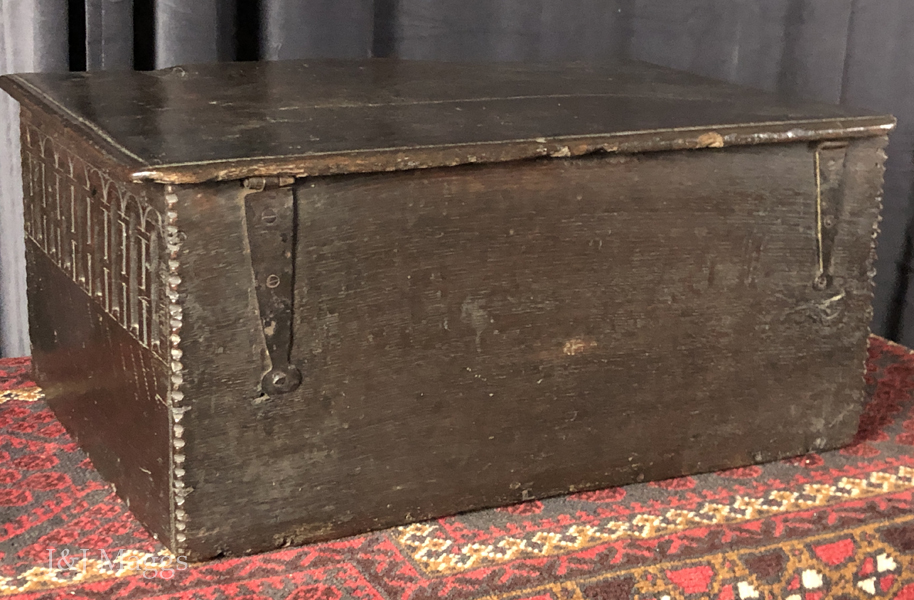
~ ~ ~ ~ ~ ~ ~ ~ ~ ~ ~ ~ ~ ~ ~ ~ ~ ~ ~ ~ ~ ~ ~ ~ ~ ~ ~ ~ ~ ~ ~ ~ ~ ~ ~ ~ ~ ~ ~ ~ ~ ~ ~ ~ ~ ~